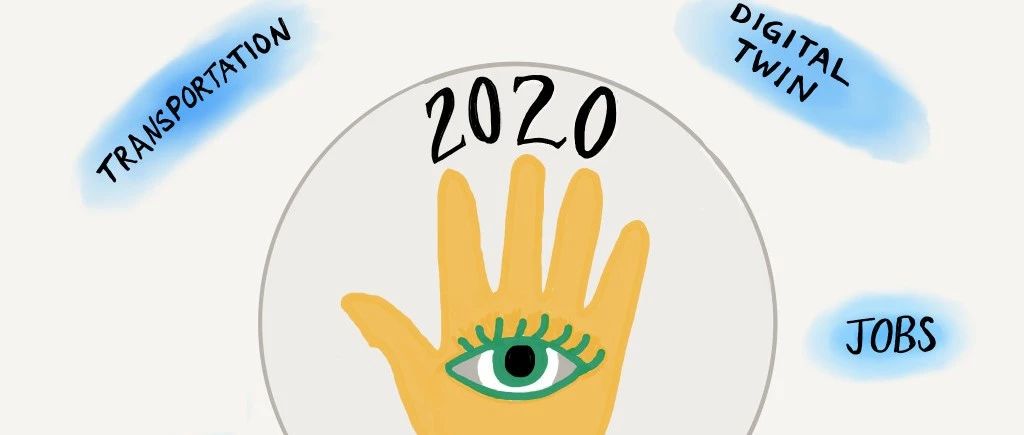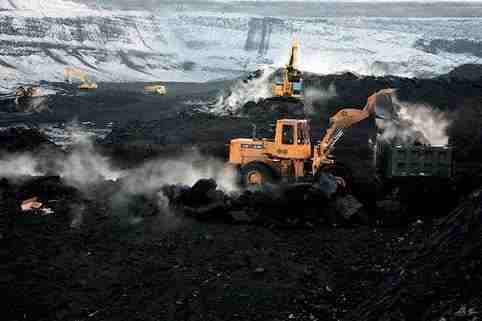对未来做出预测是一个长期而历史悠久的做法。但是做出预测真的很难,尤其是关于未来。相反,这里有五个关键的数字趋势,在我看来,几乎势不可挡,以数字未来在石油和天然气占据主导力量。

以下是今年和整个十年中值得关注的数字石油和天然气世界的五大趋势。
对未来做出预测是一个长期而历史悠久的做法。 但是做出预测真的很难,尤其是关于未来。 相反,这里有五个关键的数字趋势,在我看来,几乎势不可挡,以数字未来在石油和天然气占据主导力量。 商业界,当然在欧洲、北美和亚洲,现在非常认真地对待脱碳问题,我相信在未来几年里,将加快这一领域的努力和投资。 资本市场越来越多地询问碳减排活动以及碳基资源闲置的潜力。 投资和主权财富基金将进一步剥离石油和天然气资产,以减少风险敞口。 石油和天然气行业在资本市场上的重要性将继续缩小,随着科技等其它行业在领先指数中占据主导地位,其相关性将不断下降。 幸运的是,早期的脱碳结果非常有希望,大型石油和天然气公司将自信地宣布他们打算在本十年内成为碳中和。 解决方案大部分在于新的工业技术,该技术可以捕获碳排放、从大气中提取碳或收紧泄漏的设备。 节省的很大一部分来自使用数字镜头重新构想石油和天然气商业和工业流程。 我预计,新项目或技术采购的投资投入将越来越多地包括脱碳结果以及安全方面的侧改进。 投资小组将支持那些对脱碳目标表现出敏感性的建议。 数字项目将被视为清洁技术,因为数字技术对碳的影响,通过减少驾驶,使资产更加自主,以及消除重工。 面临风险的商业模式是那些将碳排放等外部因素视为无法解决或必要的罪恶的商业模式。 向电力运输的转变正在进行中,并将在未来十年内加速发展。 下一代汽车客户看起来每天花7-8个小时盯着小屏幕而不是挡风玻璃。 排名前6位的汽车制造商(通用、福特、本田、丰田、大众和现代)都宣布了主要计划,以实施产品电气化。 丰田的目标是到2025年,汽车销量占全部汽车销量的50%,成为电动品种。 到2023年,通用汽车将在全球销售20款电动汽车。 特斯拉已经每年销售35万辆3型,并即将在中国和欧洲开设新的制造工厂。 本田宣布,它打算到2023年在欧洲只销售电动和混合动力汽车。 美国外交政策的不可预测性,美国退出全球贸易论坛,美国政治体系对全球银行业的束缚,美国实施的制裁和关税的影响,以及其他经济体的不断增强,都造成了有利于全球贸易去美元化的条件。 为金融交易创造一种可行的、被广泛接受的加密货币。 不仅金融系统的在职者正在试验新的货币概念,而且各国现在都公开承诺接受加密货币。 俄罗斯石油和天然气供应商已经就完全以卢布结算的(要求)合同达成一致,这些合同允许这些合同在美国银行系统之外结算。 一旦市场降低替代货币的石油和天然气交易的风险,转向与在美国运营的全球银行毫无联系的加密货币的能力就变得容易得多。 并且非常吸引希望逃避美国制裁压力的产油国(委内瑞拉、伊朗、伊拉克、俄罗斯...... 试想一下,中国将如何成为第一个向新货币机制转变的市场力量,而不必首先将其金融体系与世界完全整合。 这就像无线电信如何超越有线世界一样。 面临风险的业务模式包括交易、财务后台和风险管理。 高度复杂的真实世界系统的完全功能数字版本继续在道路上运行。 在天气预报业务中,我们可以最清楚地看到这一趋势。 天气系统的数字孪生需要庞大的数据收集传感器网络、大量数据、大量的并行计算周期来处理场景,并且所有系统都实时运行。 今天,在我步行到家之前,我的气象应用程序准确地预报了1: 30的降雨,果然,雨在预测时间的几分钟内就开始了。 我的地图应用现在显示道路拥堵(基于手机,似乎没有移动),并很可能能够预测交通。 许多物理世界系统都在等待他们的数字结对。 很少有石油公司(如果有的话)能够以最基本的方式将上游、中游和下游资产联系起来。 例如,石油生产除了最猛烈的价格信号之外,没有任何反应,即便如此,反应也迟钝。 许多油井的经济效益低于全部成本,只有在遭受痛苦的损失之后,老板们才会削减开支。 构建像石油和天然气一样复杂的供应链的真实数字版本的构建基块已经到位——云计算、数据处理、机器学习。 谨慎资产的数字版本现在司空见惯,而创建更大范围扩展版本的激励将证明是压倒性的。 长期、稳定和稳定的石油和天然气工作时代让位于永久性调整和动荡。 可以肯定的是,这部分是由于未来对化石燃料需求的不确定性。 但是,这种趋势在亚马逊等公司如何将变更部署到其业务中(每年更新 5000 万次)以及特斯拉如何在一夜之间更新车辆方面显而易见。 缓慢而又及时,让位于快速敏捷。 未来将少得多的日常工作,在这么多的石油和天然气角色的特点。 日常工作仍然存在,但将由数字工具和代理执行。 工作将首先根据他们需要的自动化级别进行定义,然后将人的角色折叠起来(与今天相反)。 特斯拉的机器人汽车工厂展示了这在制造中是如何工作的。 人工智能、机器学习和机器人系统作为工作辅助工具尤其能够推动石油和天然气工作,因为这项工作是技术和分析性的,依赖于数学,较少受到独立的人类判断的驱动。 今天,进入石油和天然气工作领域的人对该行业的创新毫无准备。 尚未充分考虑数字对该领域实际工作的影响大量的石油和天然气专业人员将需要提高他们的技能,以保持他们的相关性,或成为这一波变革的相关者。 还有很多趋势需要关注——例如,增材制造及其对资产管理的影响 Five Digital Oil and Gas Trends to Watch in 2020 – Geoffrey Cann Here are five trends in the world of digital oil and gas worth watching this year and throughout the decade.
It’s been a long-standing and time honoured practice to make predictions about the future. But as Yogi Berra, a famous and oft-quoted New York Yankees catcher and manager, observed, “Making predictions is really hard, especially about the future”. Instead, here are five key digital trends that look pretty much unstoppable to me, and feature as the bright white lines on any of my roadmaps to a digital future in oil and gas. Carbon
The business world, certainly in Europe, North America, and Asia, now treats decarbonisation very seriously, and I believe will accelerate efforts and investments in this arena for the next several years. Capital markets increasingly ask about carbon abatement activities and the potential of stranded carbon-based resources. Investment and sovereign wealth funds will further their divestment of oil and gas assets to reduce exposure. The importance of the oil and gas industry on capital markets will continue to shrink, sinking in relevance as other sectors, like technology, rise to dominate the leading indices. Fortunately, early decarbonisation results are sufficiently promising that large oil and gas companies will confidently declare their intent to become carbon neutral this decade. Much of the solution lies in new industrial technology that does things like capture carbon emissions, withdraw carbon from the atmosphere, or tighten leaky equipment. A very significant portion of savings comes from reimagining oil and gas commercial and industrial processes with a digital lens. I anticipate that investment pitches for new projects or technology purchases will increasingly include decarbonisation outcomes along side improvements in safety. Investment panels will favour those proposals that display sensitivity to decarbonisation goals. Digital projects will be seen as clean tech because of the impact that digital has on carbon, by reducing driving around, by making assets more autonomous, and by eliminating rework. Business models at risk are those that treat externalities like carbon emissions as unsolvable or a necessary evil. Transportation
The shift to electric transportation is now underway and will pick up steam in the decade ahead. Next generation car customers look like they are spending 7-8 hours per day staring at small screens rather than windscreens. The top 6 automakers (GM, Ford, Honda, Toyota, Volkswagen and Hyundai), have all announced major programs to electrify their offerings. Toyota aims for 50% of all vehicle sales by 2025 to be of the electric variety. GM will sell 20 electric vehicle models globally by 2023. Tesla is already selling 350,000 Model 3s per year, and is about to open new manufacturing facilities in China and Europe. Honda has announced its intent to sell only electric and hybrid vehicles in Europe by 2023. I see electric cars as a new kind of digital platform. Tesla, for example, releases new software and features for its vehicles in the same way that Apple upgrades its operating system in the wee hours. In time, all automobiles will behave this way, provided the manufacturers rethink their vehicle architectures to be more like phones and less like industrial equipment. Doing so enables vehicle sharing, self driving vehicles, evergreen interfaces, third party innovation, and vehicle-landscape integration with smart cities. The Ford F-150, for example, has over 150 million lines of code in it, but the user interface is pretty blah compared to a $500 phone. The fight for the fuel tank is now underway. Ford and GM have both announced the construction of enormous networks of charge stations, taking them into direct competition with fuel retailing. As their vehicles become smarter, they will own the customer relationship in a way that fuel companies cannot, all enabled by digital technology. Power utilities with their existing customer systems and grid systems are also keen for the digital car. Real estate operators who have the parking spots will also want a piece of the action. Business models now at risk include traditional fuel retailing, vehicle servicing and repair, auto insurance, driver training, and vehicle financing. De-dollarization
The unpredictability of US foreign policy, the US withdrawal from global trading forums, the stranglehold that the US political system has on global banking, the impacts of US-imposed sanctions and tariffs, and the rising might of other economies, creates conditions that favour de-dollarisation of global trade. There will be no let-up in the drive to create a viable, widely accepted cryptocurrency for financial transactions, with the side effect of de-dollarisation of global trade. Not only are the incumbents in the financial system experimenting with new currency concepts, but nations are now coming out in the open with their intent to embrace cryptocurrencies. Russian oil and gas suppliers are already agreeing (demanding) contracts that are solely in rubles, which allows those contracts to settle outside the US banking system. Once the market has derisked oil and gas trading in alternative currencies, the ability to shift to a crypto currency that has zero ties to global banks operating in the US becomes much easier. And very appealing to oily nations wishing to evade US sanctions pressures (Venezuela, Iran, Iraq, Russia…) It’s no surprise to me that the US political system has quickly rebelled against Facebook’s attempt to get in front of this significant shift. Facebook is easy enough to demonize, but the threats to the established global financial order and power systems are much more profound. Try to imagine how China will be the first market power to shift to a new currency mechanism without having to first fully integrate its financial system with the world. It will be like how wireless telecoms leapfrogged the wired world. Business models at risk are trading, financial back offices, and risk management. Digital twin
Fully functioning digital versions of highly complex real world systems continue to make in-roads. We can see this trend most plainly in the weather forecasting business. A digital twin of the weather system requires vast networks of data gathering sensors, enormous amounts of data, lots of parallel computing cycles to crunch the scenarios, and all operating in real time. Today, ahead of my walk to the chemist, my weather app forecasted rain at 1:30 precisely, and sure enough, the rain started within a few minutes of the predicted time. My mapping apps now show road congestion (based on cell phones that do not appear to be moving), and may well be able to predict traffic. Many physical world systems await their digital twinning. Few oil companies, if any, are able to link their upstream, midstream and downstream assets in any but the most rudimentary ways. Oil production, for example, does not respond to anything but the most violent price signals, and even then, the response is sluggish. Many oil wells run at economics below their full costs, and only after incurring painful losses will bosses cut back. The building blocks for building true digital versions of supply chains as complex as oil and gas are in place—cloud computing, data handling, machine learning. Digital versions of discreet assets are now commonplace, and the incentive to create greater more expansive versions will prove overwhelming. Jobs and work
The era of long term, stable and consistent oil and gas jobs gives way to permanent adjustment and upheaval. In part this is driven by the uncertainty in the future demand for fossil fuels, to be sure. But this trend is clearly visible in how companies like Amazon deploy changes into their business (50m updates a year), and how Tesla updates its vehicles overnight. Slow and stately is giving way to fast and agile. The jobs of the future will have much less of the routine work that features in so many oil and gas roles. The routine work still exists, but will be carried out by digital tools and agents. Jobs will be defined first for the level of automation that they need, and the human roles will then be folded in (the reverse of today). Tesla’s robotic car plants show how this works in manufacturing. Oil and gas work is particularly enabled by artificial intelligence, machine learning and robot systems as job aids since the work is technical and analytical, reliant on math, and less driven by independent human judgement. Someone entering the oil and gas work world today is unprepared for the innovations coming to the industry. Students exiting oil and gas education programming in 2020 are most likely learning a curriculum defined two decades ago. Digital impacts on the real jobs in the field have yet to be fully considered in education forums (I hear this consistently from students who buy my book and greet me at conferences). Vast numbers of oil and gas professionals will need to upgrade their skills to maintain their relevance or be victims of this wave of change. Conclusions
There are plenty more trends out there to keep an eye on — additive manufacturing and its impact on asset management, for example — but these five should get your Board conversation started.
免责声明:以上内容转载自数字化石油天然气聚焦,所发内容不代表本平台立场。
全国能源信息平台联系电话:010-65367702,邮箱:hz@people-energy.com.cn,地址:北京市朝阳区金台西路2号人民日报社








